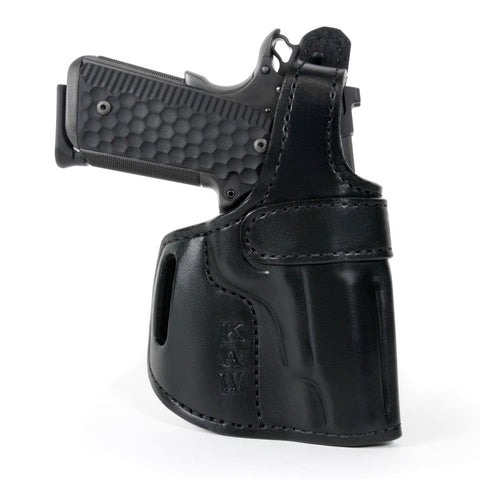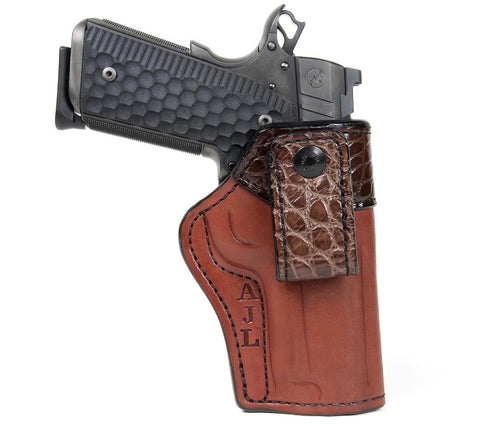What is a Level 2 Holster?
When it comes to holsters, retention is one of the most important factors to consider. sometimes you'll need a level 2 holster for retention, but what is a level 2 holster? We'll take a look at what retention is, what a Level 2 holster is, and what each level of retention offers.
Holster Retention: What is It?
Holster retention is exactly what it sounds like. It’s a way to keep your gun held securely inside your holster. And while each holster company defines their retention levels differently, there are some similarities. Generally speaking, holsters come in one of three retention levels: Level 1, Level 2, and Level 3. Here’s the differences between each of them.
Level 1 (Passive Retention)
Usually, the term “Level 1” retention refers to what many of us call “passive retention.” In other words, the friction and tightness of the holster itself retains the firearm. While that may not sound like much, it’s often perfect for many applications.
Your passive retention holster’s material will affect how well it holds your gun. When it comes to Level 1 holsters, you’re going to want one made from a high-friction material. Leather fills this niche nicely, since it’s more durable and sticky than other common holster materials like nylon or kydex, while requiring more maintenance.
Level 2 (Thumb Break or Locking Mechanism)
Usually, a Level 2 holster is any holster that incorporates some kind of active retention. Some holsters, like Safariland, use a device that locks around your pistol’s trigger guard, which requires you press a button to release it.
While this is one common method to achieving Level 2 retention, it’s not the only one. Some Level 2 holsters utilize a thumb break instead of a trigger guard lock. A thumb break is just a strap of leather that attaches to the body of the holster around the back of your gun. A simple solution to a simple problem. Thumb breaks are common among 1911 holsters, since the grip safety offers a natural angle to loop around.
Level 3 (The Rarest Retention)
Level 3 holsters do exist, but they’re significantly less common. Essentially, a Level 3 holster is just a Level 2 holster with an extra retention mechanism. For instance, a Level 3 holster might incorporate both a trigger guard lock and a thumb break.
Best Concealed Carry Holster
Okay, so now that we’ve gone over the difference in holster Levels, there’s one last question to ask: which is best for concealed carry?
Generally the best concealed carry holster uses passive retention. That’s because if you’re going to draw from a concealed carry holster, chances are you need to do it quickly. If you have any type of retention device, it’s just going to get in the way. As a result, Level 1 holsters make the best concealed carry candidates.
Whether you’re on the hunt for a passive retention holster or want a Level 2 device, we’ve got your back. Answer this simple 4-question survey to find the best holster to suit your personal needs.




























